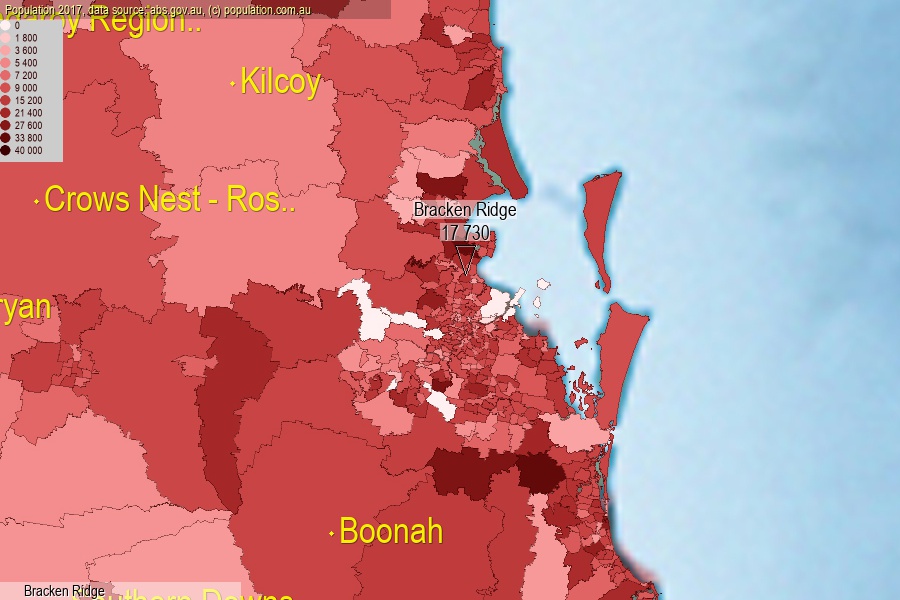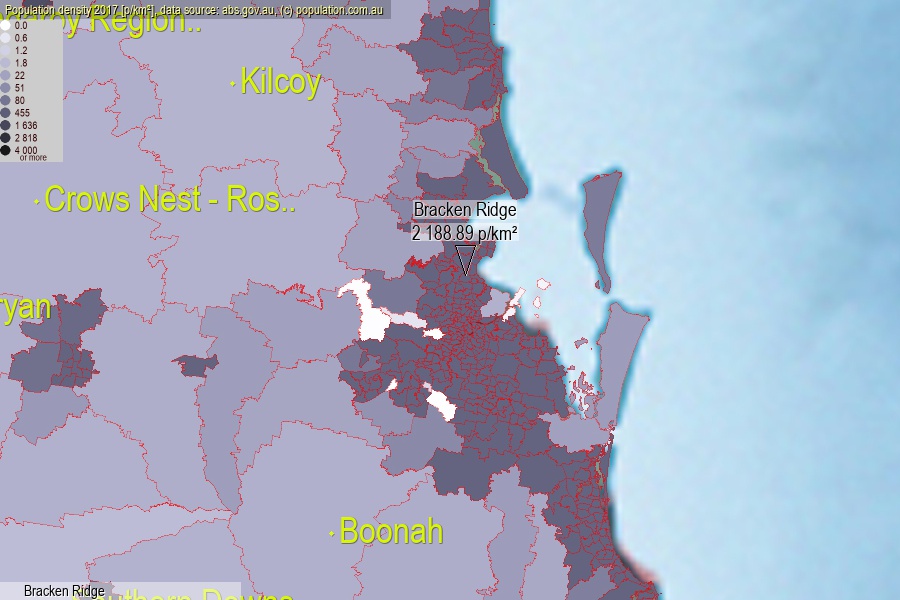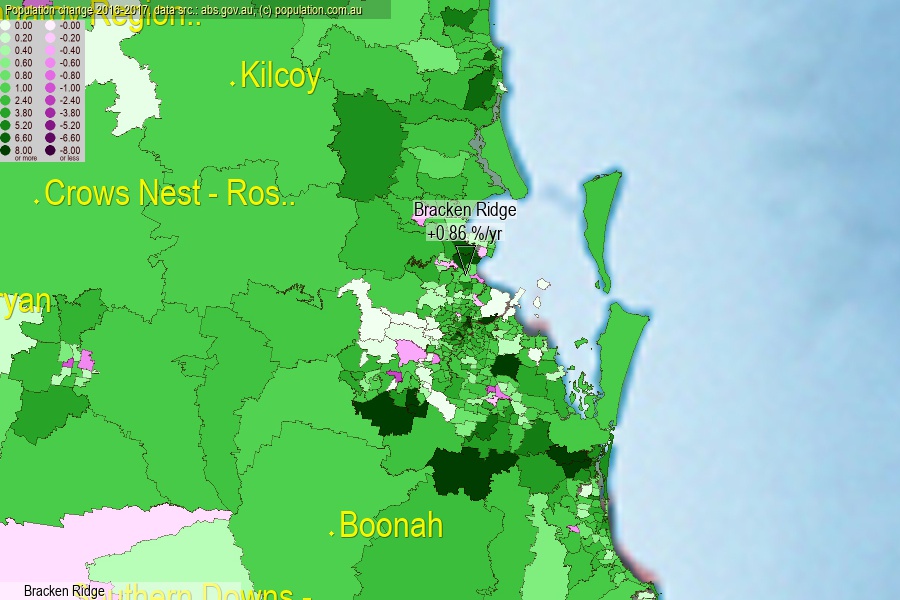 population.com.au
population.com.auLast official estimated population of Bracken Ridge (as Statistical Area Level 2) was 17 730 people (on 2017-06-30)[2]. This was 0.07% of total Australian population and 0.355% of QLD population. Area of Bracken Ridge is 8.10 km², in this year population density was 2 188.89 p/km² . If population growth rate would be same as in period 2016-2017 (+0.86%/yr), Bracken Ridge population in 2025 would be 18 986. [0]



Click to enlarge. Bracken Ridge is located in the center of the images.
Population [people], population density [p./km²] and population change [%/year] [2]
View borders » (new window) [4]
[1991-1992] +2.44 %/Yr.
[1992-1993] +0.84 %/Yr.
[1993-1994] +1.89 %/Yr.
[1994-1995] +1.79 %/Yr.
[1995-1996] +1.55 %/Yr.
[1996-1997] +1.92 %/Yr.
[1997-1998] +2.85 %/Yr.
[1998-1999] +2.15 %/Yr.
[1999-2000] +0.84 %/Yr.
[2000-2001] +1.81 %/Yr.
[2001-2002] +2.93 %/Yr.
[2002-2003] +1.62 %/Yr.
[2003-2004] +0.57 %/Yr.
[2004-2005] +3.50 %/Yr.
[2005-2006] +0.81 %/Yr.
[2006-2007] +2.40 %/Yr.
[2007-2008] +3.52 %/Yr.
[2008-2009] +2.43 %/Yr.
[2009-2010] +1.25 %/Yr.
[2010-2011] +0.27 %/Yr.
[2011-2012] +1.28 %/Yr.
[2012-2013] +0.16 %/Yr.
[2013-2014] -0.05 %/Yr.
[2014-2015] -0.39 %/Yr.
[2015-2016] +0.08 %/Yr.
[2016-2017] +0.86 %/Yr.
[0] Calculated with linear interpolation from officially estimated population
[1] Read more about SA2 and Australian Statistical Geography Standard (ASGS) on abs.gov.au
[2] Population data from Australian Bureau of Statistics (Population and density: 2017; change: 2016-2017)
[3] Digital Boundaries: Australian Statistical Geography Standard (ASGS) 2016.
[4] Border coordinates are simplifyed using Ramer-Douglas-Peucker algorithm.